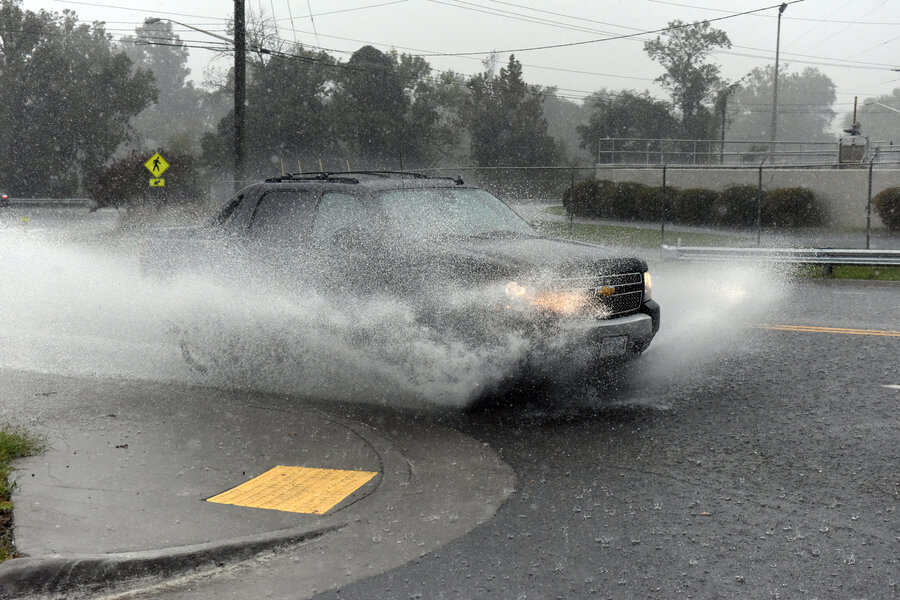Why climate change could make extreme rain three times more likely
Loading...
Extreme downpours could happen almost three times as often, and with a 70 percent increase in intensity, throughout the United States by the end of the century as a result of global warming, finds a new study published in the journal Nature Climate Change.
Such storms could be especially common in parts of the Gulf Coast, Atlantic Coast, and Southwest, including in states like Louisiana and Texas, where such downpours have recently caused flooding that forced people from their homes and brought tens of thousands of petitions for flood relief, researchers say.
"These are huge increases," said lead author Andreas Prein, a scientist at the National Center for Atmospheric Research (NCAR), in a statement. "Imagine the most intense thunderstorm you typically experience in a single season. Our study finds that, in the future, parts of the U.S. could expect to experience five of those storms in a season, each with an intensity as strong or stronger than current storms."
The study was based on data produced by a model developed at the NCAR-Wyoming Supercomputing Center in Cheyenne, Wyo., capable of simulating individual storms. It’s part of the incremental march toward the development of more accurate, high-resolution computer simulations, which predict how global warming influences specific regions.
The team of researchers sought to model how storm frequency and intensity seen between 2000 and 2013 in the US would change if the temperature were 9 degrees F. warmer. That’s the level of global warming that scientists expect by the end of the century if current levels of carbon emissions continue.
That technique doesn’t take account possible alterations to weather systems and storm tracks caused by climate change, says Dr. Prein. But the fact that the model allowed the team to isolate the influence of additional heat and moisture on future storms was itself a "quantum leap in climate modeling," he added.
"This enables us to investigate changes in hourly rainfall extremes that are related to flash flooding for the very first time," he said.
In 2015, MIT Technology Review editor Richard Martin noted that current climate models aren’t very adept at predicting specific climate effects – like the rapid melting of Greenland’s Zachariae Isstrom glacier, which took scientists by surprise.
“[A]fter more than three decades, hundreds of millions of dollars, and countless scientist-hours invested,” Mr. Martin went on, “climate models have gotten much, much better.”
“But most climate scientists acknowledge that there are limits: no matter how sophisticated our models become, there will always be an irreducible element of chaos in the earth’s climate system that no supercomputer will ever eliminate,” he concluded.
Louisiana may already be getting a taste of what these kinds of changes look like after two feet of rain fell in the state in less than two days in August.
“A flood like the one that ravaged Louisiana over the past few days has a 0.2 percent chance of occurring any given year and should only occur once every 500 to 1,000 years, according to scientists at the National Oceanic and Atmospheric Administration (NOAA),” The Christian Science Monitor reported in August.
“But there have been eight such storms in the United States alone since May 2015.... And Louisiana is not alone. In the last 15 months, Oklahoma, Texas, South Carolina, Maryland and West Virginia all experienced devastating floods – resulting in widespread injury, property damage, economic loss, and death – that give insight into what climate change looks like in action.”








